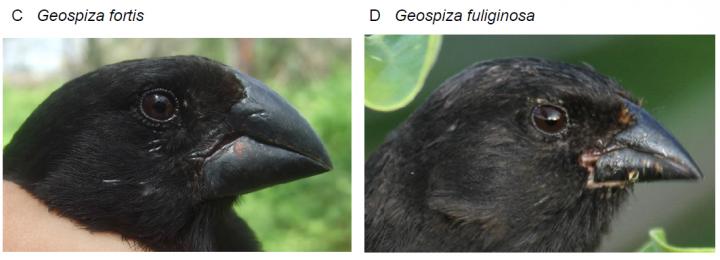How observable (not imaginary) "Evolutionary changes" should be interpreted.
Whenever you read in the news that "something evolved" - these are either epigenetic changes or adaptive mutations through the loss of function. I'll try to explain both briefly and try to understand this because you will have to apply this framework to all future and past news. Don't be deceived.
1) Epigenetics.
DNA in the genome can be tagged in specific places with special molecules that change gene function but keep the DNA sequence intact—a field of study called epigenetics. Epigenetic changes are dynamic and controlled by complicated cellular systems. They enable incredible levels of fine-tuned, environment-specific adjustments within organisms without any DNA sequence modifications whatsoever. Offspring can even inherit many of these epigenetic changes.
Epigenetic mechanisms are helpful at some future, unknown, time when the environmental challenge finally presents itself. They are useless when they initially arise, and so would not be preserved by evolution's mythical natural selection.
These are two mice with IDENTICAL DNA, however different expression of this DNA (different epigenetic tags)
We already have emperical examples of huge phenotypic changes which were attained very rapidly and were adaptive. And I'll pose some of the examples below which I found remarkable.
We already have emperical examples of huge phenotypic changes which were attained very rapidly and were adaptive. And I'll pose some of the examples below which I found remarkable.
1) Italian lizard acquired new organ in few decades- a gut valve after changing its environment . Without gene sequence alteration
https://www.sciencedaily.com/releases/2008/04/080417112433.htm
2) stickleback fish rapidly acquired huge morphological changes without gene sequence alteration after changing its environment and waters
In 1971, biologists moved five adult pairs of Italian wall lizards from their home island of Pod Kopiste, in the South Adriatic Sea, to the neighboring island of Pod Mrcaru. Now researchers have shown that introducing these small, green-backed lizards, Podarcis sicula, to a new environment...
www.sciencedaily.com
3) Unable to move and facing starvation, the bacteria evolve a replacement flagellum - a rotating tail-like structure which acts like an outboard motor - by patching together a new genetic switch with borrowed parts."But the hotwiring comes at a cost. The replacement key is a molecule borrowed from a system which regulates nitrogen levels. The mutant bacteria can now move, but it can't regulate nitrogen properly, which can build up and become toxic. Of course, it's an evolutionary price worth paying when the alternative is certain death."
4) "Consistent components of complex traits, such as those linked to human stature/height, fertility, and food metabolism or to hereditary defects, have been shown to respond to environmental or nutritional condition and to be epigenetically inherited
Genome-wide association studies of complex physiological traits and diseases consistently found that associated genetic factors, such as allelic polymorphisms or DNA mutations, only explained a minority of the expected heritable fraction. This discrepancy is known as “missing heritability”, and...

humgenomics.biomedcentral.com
5) Studies of fish, birds, amphibians and insects suggest that adaptations that were, initially, environmentally induced may promote colonization of new environments and facilitate speciation5, 6. Some of the best-studied examples of this are in fishes, such as sticklebacks and Arctic char. Differences in the diets and conditions of fish living at the bottom and in open water have induced distinct body forms, which seem to be evolving reproductive isolation, a stage in forming new species.
6) And my favourite example is a cichlid fish wich diversified rapidly without gene sequence alteration
The Great Lakes of East Africa swarm with fish–particulary with one kind of fish known as cichlids. In Lake Victoria alone you can find over 500 species. These species come in different colors and make their living in many different ways–sucking out eyeballs of other cichlids, scraping algae off...

phenomena.nationalgeographic.com
7) The beaks of Darwin's finches change through epigenetic process, not because natural selection kills particular finches with certain beaks during drought or normal climate conditions, but because of distinct dietes
Epigenetics may explain how Darwin's finches respond to rapid environmental changes, according to new research published in the open access journal BMC Evolutionary Biology.

phys.org
8) The second example is an "Evolution through loss of function mutations". It's very common in nature. As an example I'll bring a car which runs out the fuel. In order this car to go further one can jettison the door of the car, its audio system, mirrors. Car will become lighter and can go more distance. However this is definitely a reduction in car's complexity.
I'll give you one more example. Imagine two enemies fighting each other. When one enemy attacks the other in order to survive the one who is attacked demolishes his bridge the enemy couldn't cross the border and kill him. Of course breaking the bridge he will survive, but this will not explain how the bridge appeared in the first place.
This is how it works. Such type of changes even being adaptive, never explain the origin of specified complexity and complex features.








